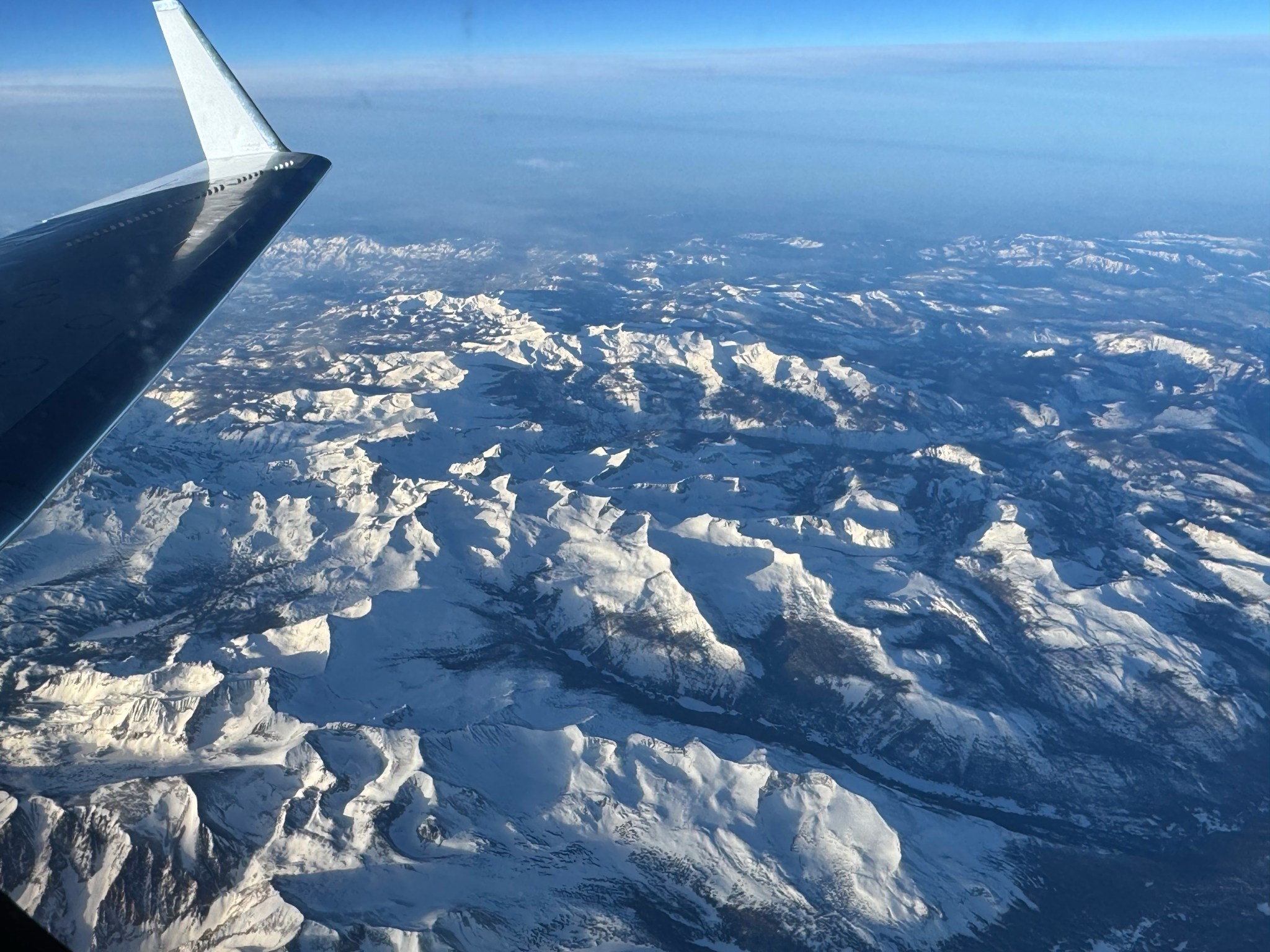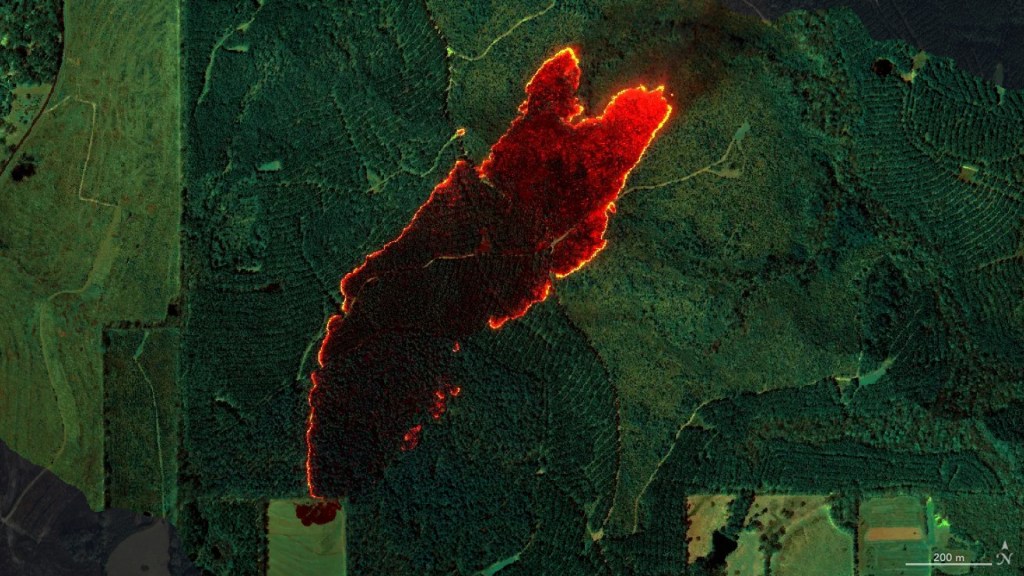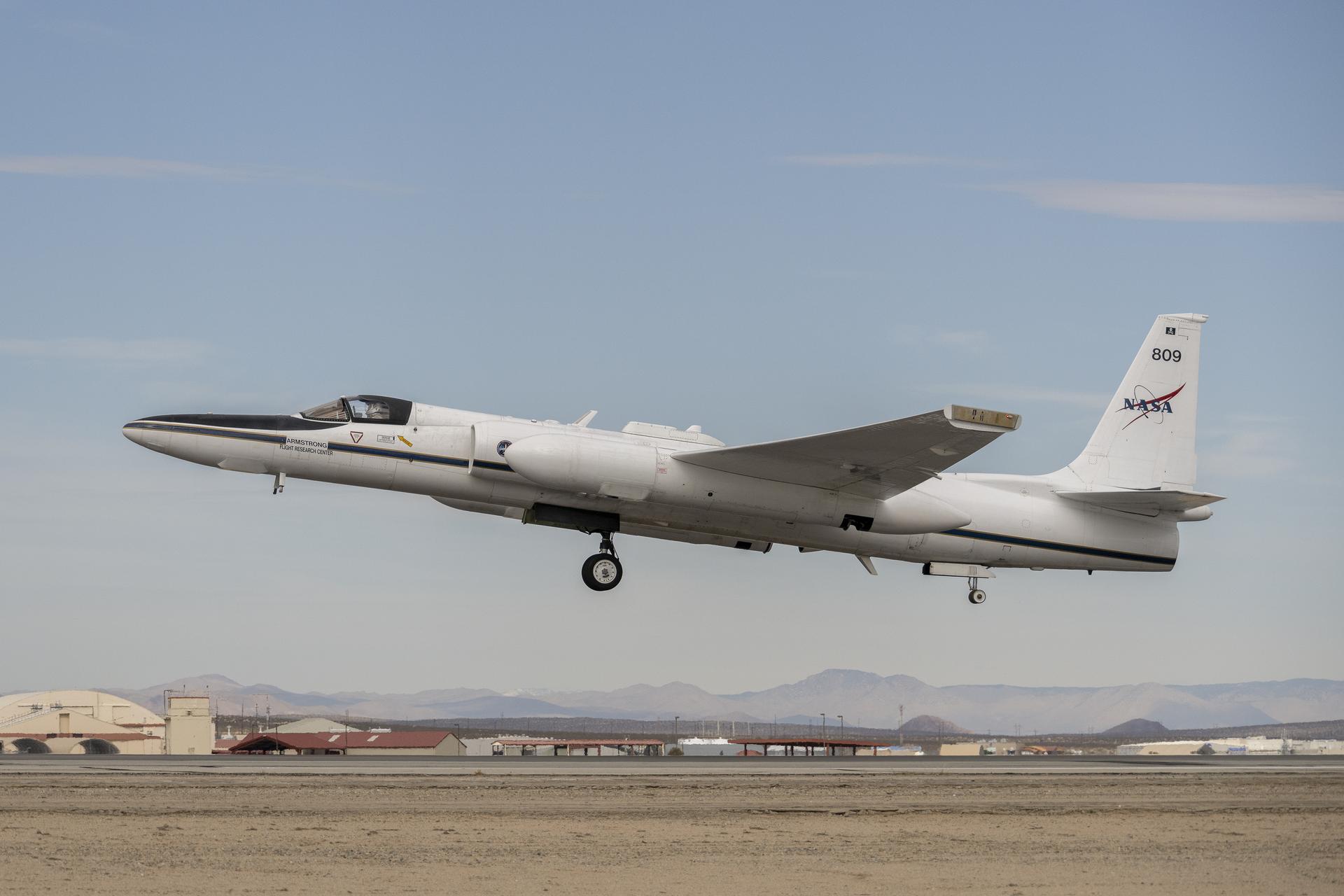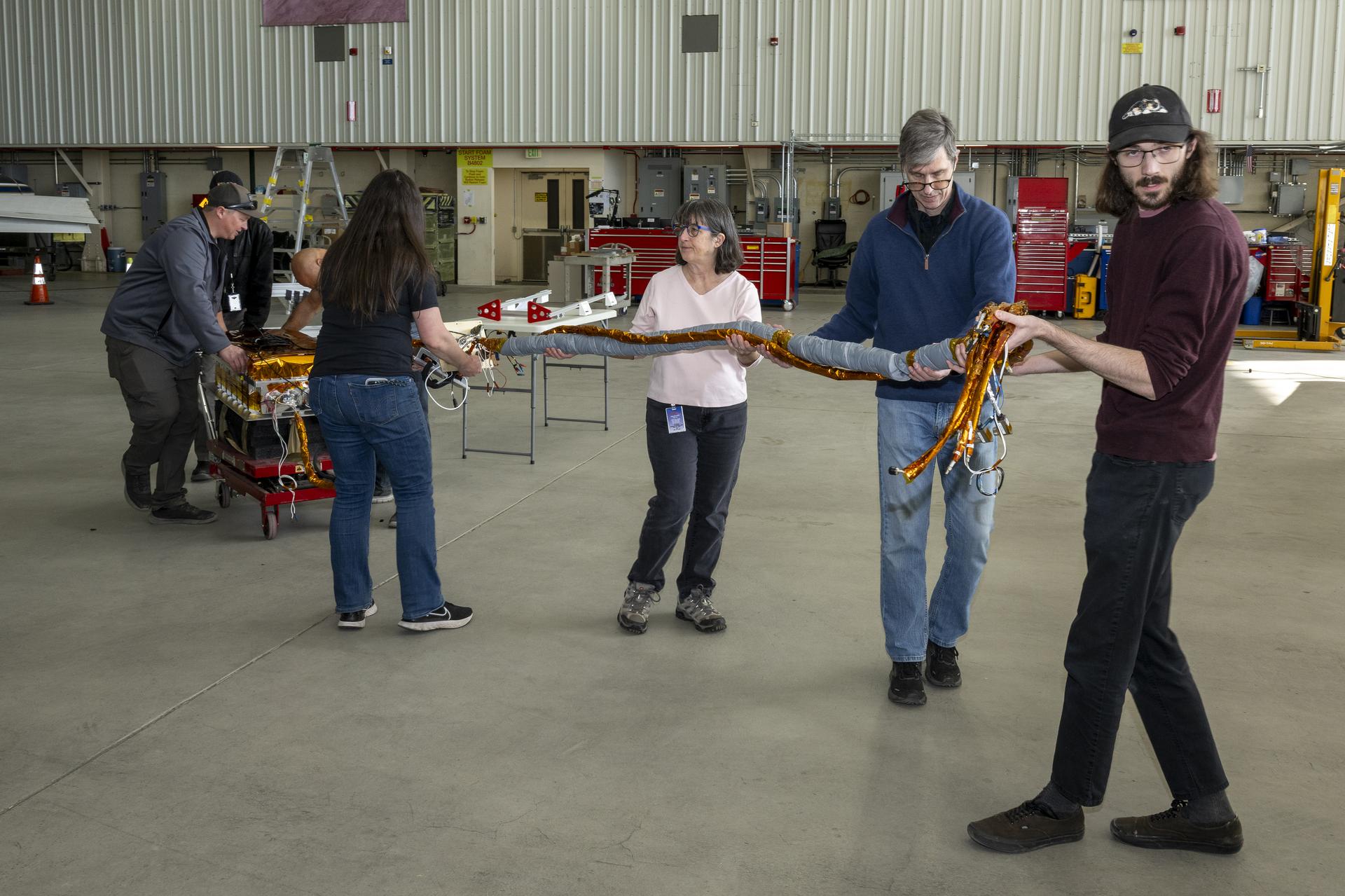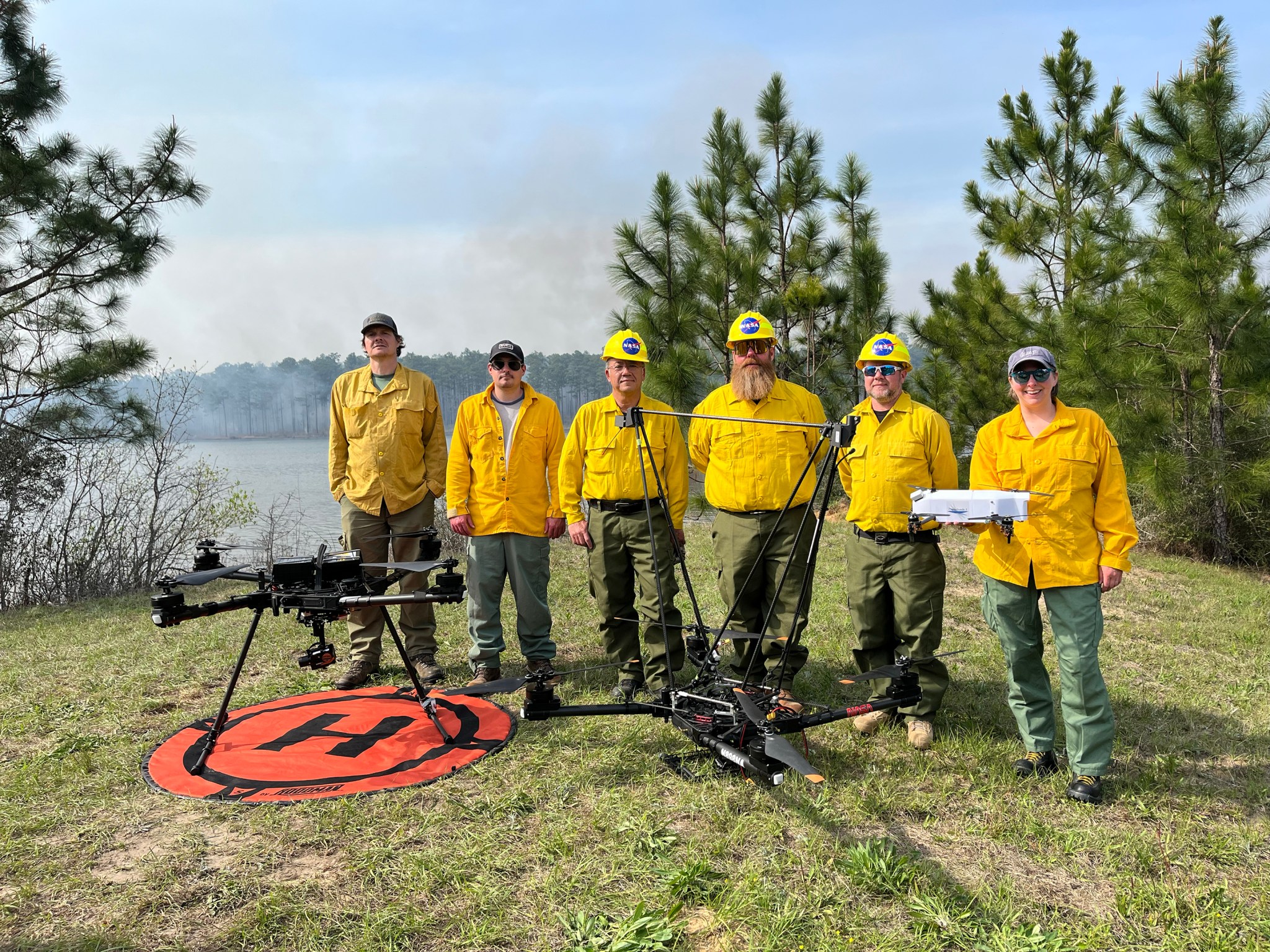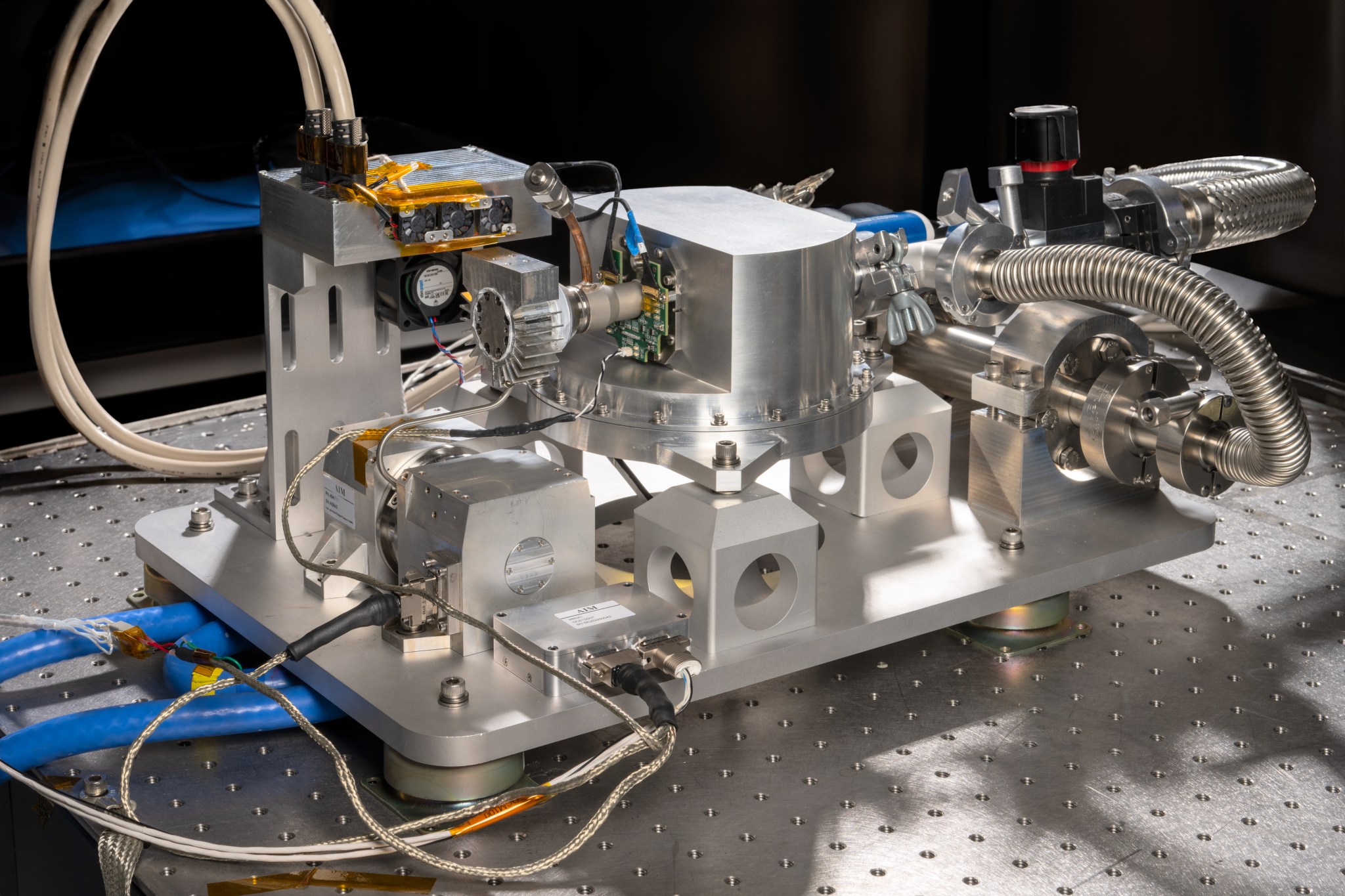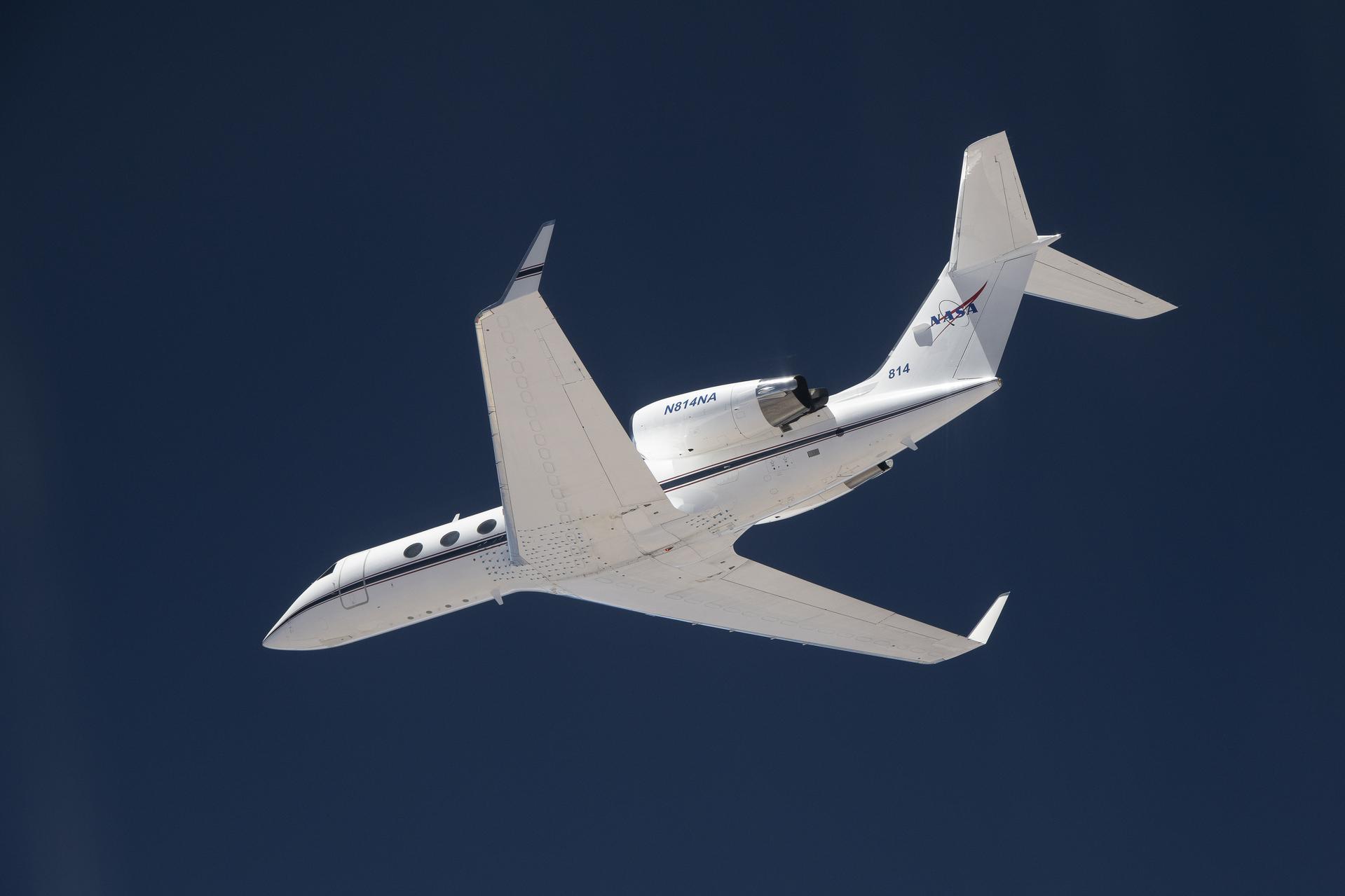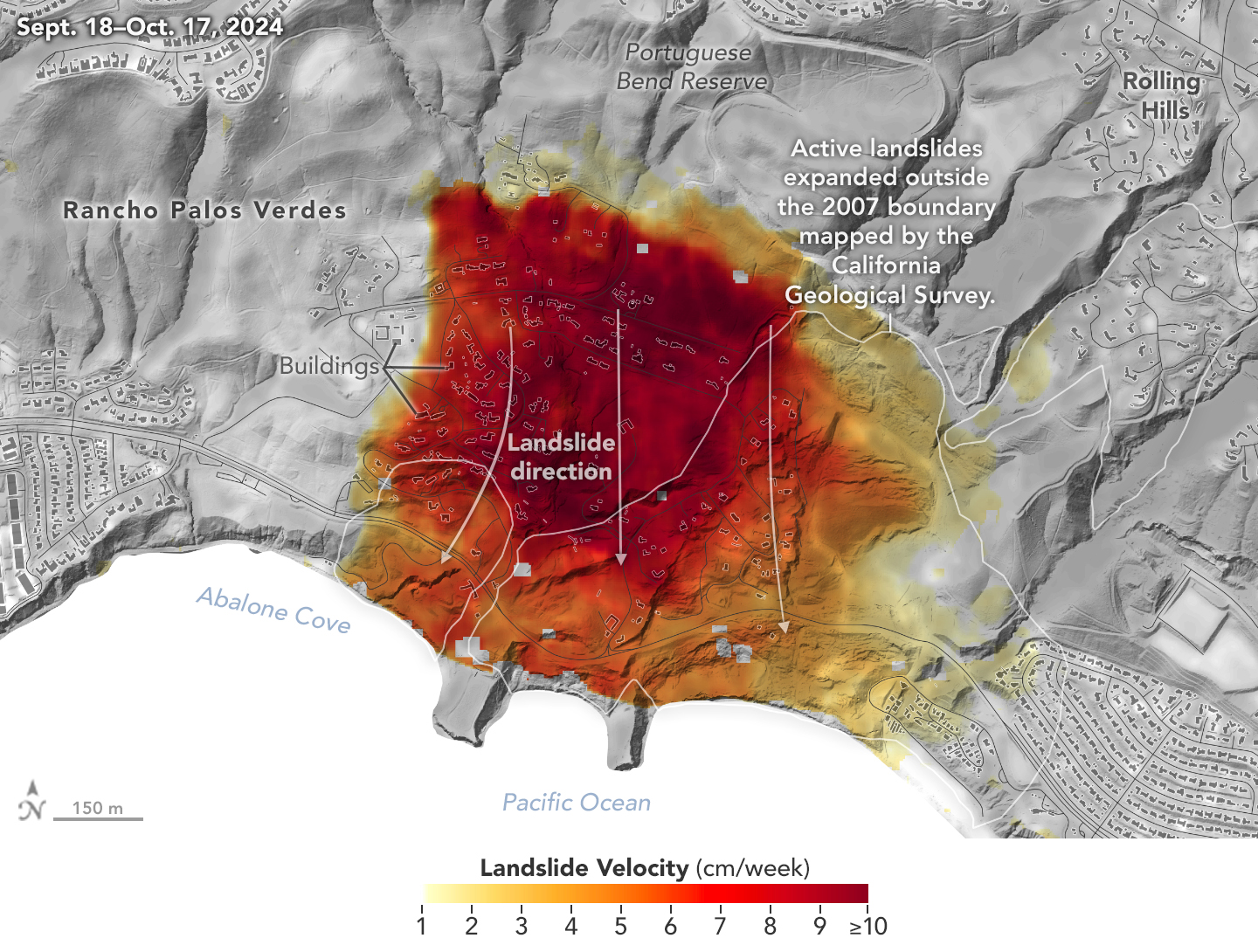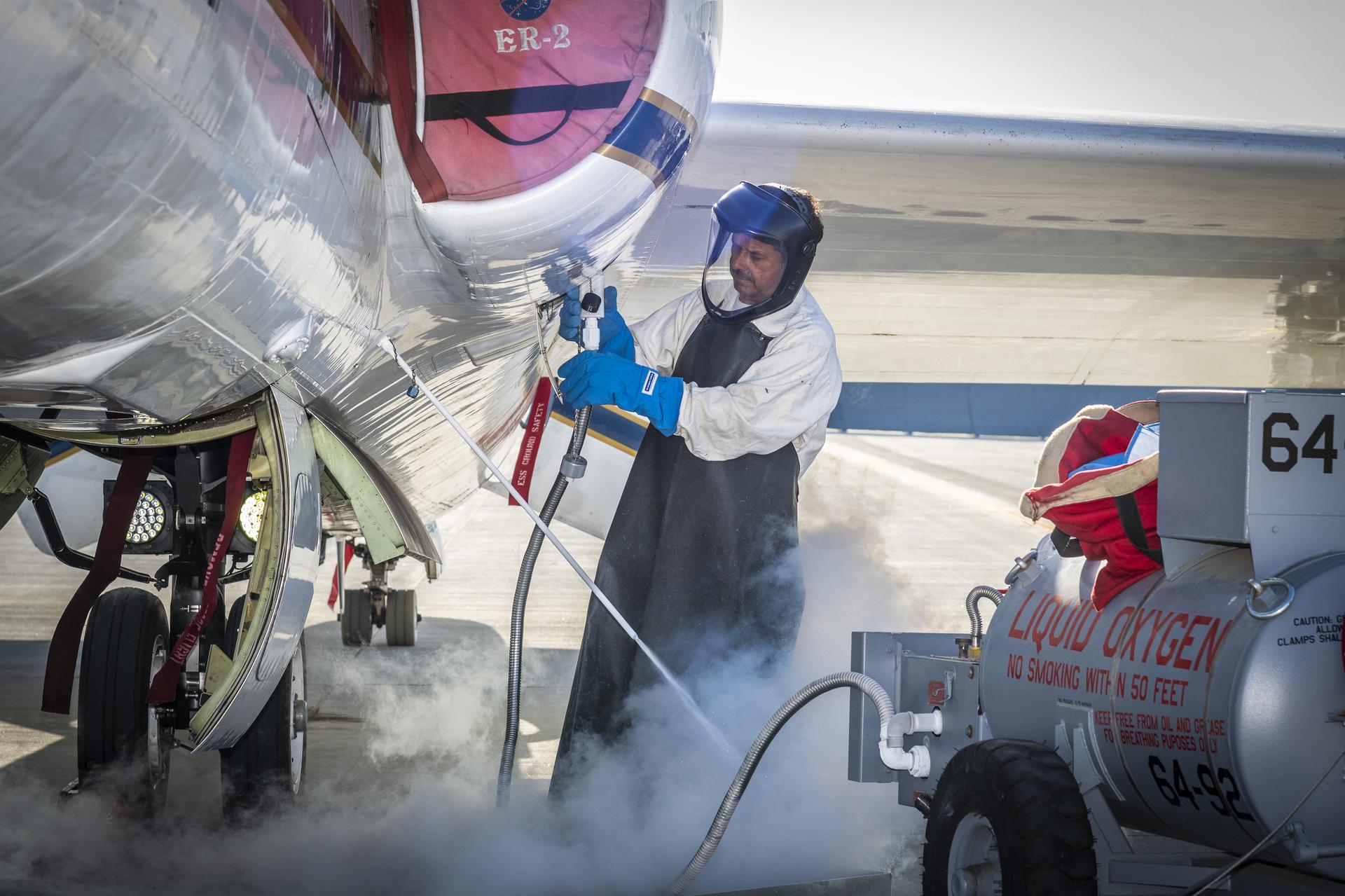3 min read Preparations for Next Moonwalk Simulations Underway (and Underwater) The C-20A aircraft, based at NASA’s Armstrong Flight Research Center in Edwards, California, flies over the Sierra Nevada Mountains in California for the Dense UAVSAR Snow Time (DUST) mission on Feb. 28, 2025. The DUST mission collected airborne data about snow water to help improve water management and reservoir systems on the ground. NASA/Starr Ginn As part of a science mission tracking one of Earth’s most precious resources – water – NASA’s C-20A aircraft conducted a series of seven…
Read MoreTag: Airborne Science
NASA Airborne Sensor’s Wildfire Data Helps Firefighters Take Action
5 min read Preparations for Next Moonwalk Simulations Underway (and Underwater) NASA’s AVIRIS-3 airborne imaging spectrometer was used to map a wildfire near Cas-tleberry, Alabama, on March 19. Within minutes, the image was transmitted to firefighters on the ground, who used it to contain the blaze. NASA/JPL-Caltech, NASA Earth Observatory The map visualizes three wavelengths of infrared light, which are invisible to the human eye. Orange and red areas show cooler-burning areas, while yellow indicates the most intense flames. Burned areas show up as dark red or brown. NASA/JPL-Caltech, NASA…
Read MoreTesting in the Clouds: NASA Flies to Improve Satellite Data
3 min read Preparations for Next Moonwalk Simulations Underway (and Underwater) Piloted by NASA’s Tim Williams, the ER-2 science aircraft ascends for one of the final science flights for the GSFC Lidar Observation and Validation Experiment (GLOVE) on Feb. 1, 2025. As a collaboration between engineers, scientists, and aircraft professionals, GLOVE aims to improve satellite data products for Earth Science applications. NASA/Steve Freeman In February, NASA’s ER-2 science aircraft flew instruments designed to improve satellite data products and Earth science observations. From data collection to processing, satellite systems continue to…
Read MoreNASA Measures Moonlight to Improve Earth Observations
The airborne Lunar Spectral Irradiance (air-LUSI) instrument is moved across the hangar floor by robotic engineer Alexander McCafferty-Leroux ,from right to left, co-investigator Dr. John Woodward, NIST astronomer Dr. Susana Deustua, air-LUSI chief system engineer Dr. Kathleen “Kat” Scanlon, and members of the ER-2 ground crew at NASA’s Armstrong Flight Research Center in Edwards, California, in March 2025. NASA/Genaro Vavuris Flying high above the clouds and moon-gazing may sound like a scene from a timeless romance, but NASA did just that in the name of Earth science research. In March…
Read MoreNASA Supports Wildland Fire Technology Demonstration
3 min read Preparations for Next Moonwalk Simulations Underway (and Underwater) Drones were a key part of testing new technology in support of a prescribed burn in Geneva State Forest, which is about 100 miles south of Montgomery, Alabama. The effort is part of the agency’s multi-year FireSense project, which is aimed at testing technologies that could eventually serve the U.S. Forest Service as well as local, state, and other federal wildland fire agencies. From left are Tim Wallace and Michael Filicchia of the Desert Research Institute in Nevada; Derek…
Read MoreNASA Uses New Technology to Understand California Wildfires
3 min read Preparations for Next Moonwalk Simulations Underway (and Underwater) The Compact Fire Infrared Radiance Spectral tracker, or C-FIRST, is managed an operated by NASA’s Jet Propulsion Laboratory, and supported by NASA’s Earth Science Technology Office. Combining state-of-the-art imaging technology with a compact design, C-FIRST enables scientists to gather data about fires and their impacts on ecosystems with greater accuracy and speed than other instruments. C-FIRST was developed as a spaceborne instrument, and flew onboard NASA’s B200 aircraft in January 2025 to conduct an airborne test. NASA/JPL-Caltech The January…
Read MoreNASA Explores Earth Science with New Navigational System
3 min read Preparations for Next Moonwalk Simulations Underway (and Underwater) The G-IV aircraft flies overhead in the Mojave Desert near NASA’s Armstrong Flight Research Center in Edwards, California. Baseline flights like this one occurred in June 2024, and future flights in service of science research will benefit from the installment of the Soxnav navigational system, developed in collaboration with NASA’s Jet Propulsion Laboratory in Southern California and the Bay Area Environmental Research Institute in California’s Silicon Valley. This navigational system provides precise, economical aircraft guidance for a variety of…
Read MoreNASA Awards Contract for Airborne Science Flight Services Support
NASA has awarded Dynamic Aviation Group Inc. of Bridgewater, Virginia, the Commercial Aviation Services contract to support the agency’s Airborne Science Program. The program provides aircraft and technology to further science and advance the use of Earth observing satellite data, making NASA data about our home planet and innovations accessible to all. This is an indefinite-delivery/indefinite-quantity firm-fixed-price contract with a maximum potential value of $13.5 million. The period of performance began Friday, Jan. 31, and continues through Jan. 30, 2030. Under this contract, the company will provide ground and flight crews…
Read MoreNASA Radar Imagery Reveals Details About Los Angeles-Area Landslides
NASA’s UAVSAR airborne radar instrument captured data in fall 2024 showing the motion of landslides on the Palos Verdes Peninsula following record-breaking rainfall in Southern California in 2023 and another heavy-precipitation winter in 2024. Darker red indicates faster motion. NASA Earth Observatory Analysis of data from NASA radar aboard an airplane shows that the decades-old active landslide area on the Palos Verdes Peninsula has expanded. Researchers at NASA’s Jet Propulsion Laboratory in Southern California used data from an airborne radar to measure the movement of the slow-moving landslides on the…
Read MoreHigh-Altitude ER-2 Flights Get Down-to-Earth Data
3 min read Preparations for Next Moonwalk Simulations Underway (and Underwater) Francisco Rodriguez (aircraft mechanic) services liquid oxygen or LOX on the ER-2 during the Geological Earth Mapping Experiment (GEMx) research project. Experts like Rodriguez sustain a high standard of safety on airborne science aircraft like the ER-2 and science missions like GEMx. The ER-2 is based out of NASA’s Armstrong Flight Research Center in Edwards, California. NASA/Steve Freeman Operating at altitudes above 99% of the Earth’s atmosphere, NASA’s ER-2 aircraft is the agency’s highest-flying airborne science platform. With its…
Read More